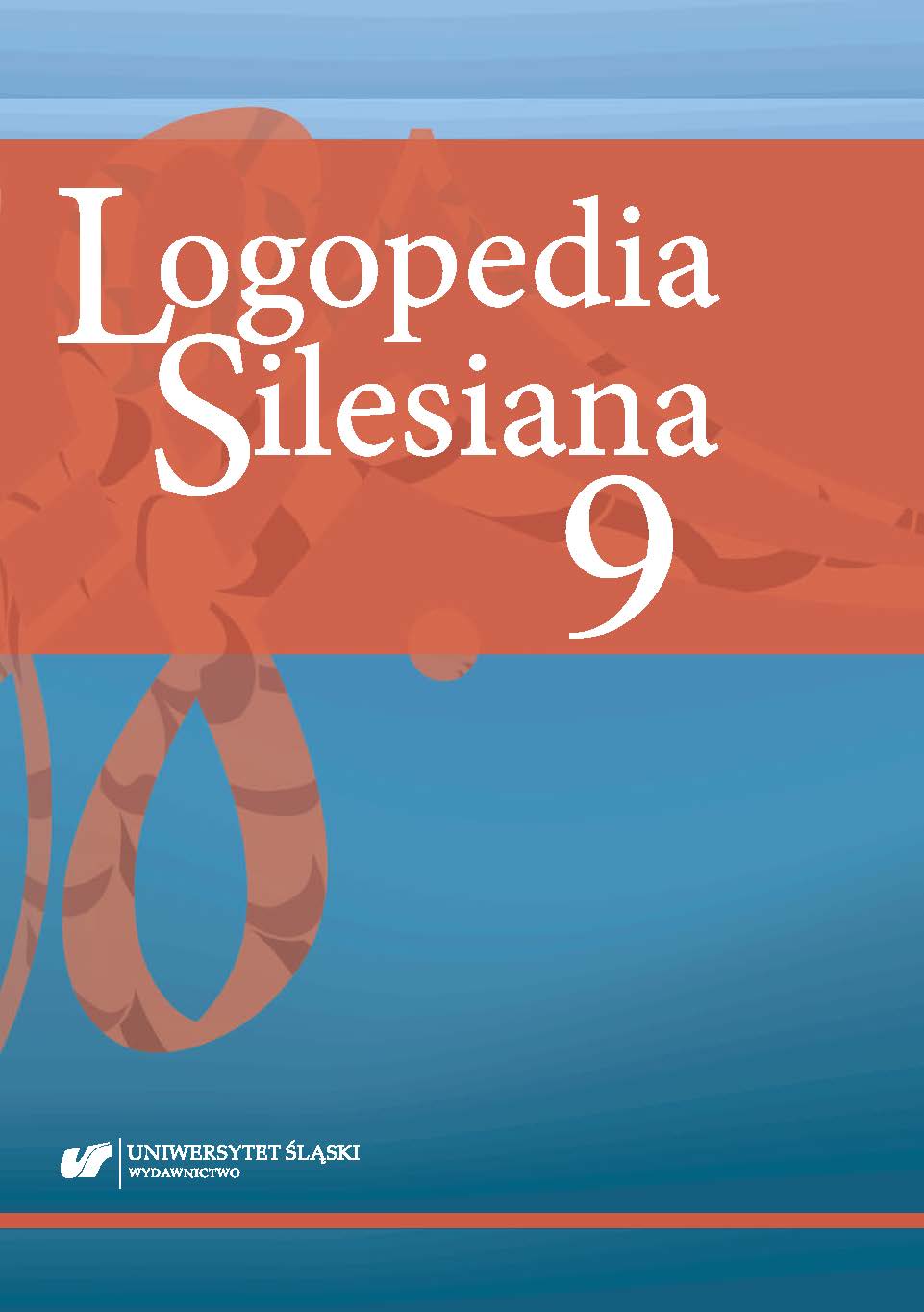Adriaans, F., & Swingley, D. (2017). Prosodic Exaggeration within Infant-directed Speech: Consequences for Vowel Learnability. The Journal of the Acoustical Society of America, 141(5), 3070–3078.
Google Scholar
Best, C.T., McRoberts, G.W., & Goodell, E. (2001). Discrimination of Non-native Consonant Contrasts Varying in Perceptual Assimilation to the Listener’s Native Phonological System. The Journal of the Acoustical Society of America, 109(2), 775–794.
Google Scholar
Best, C.T., & Tyler, M.D. (2007). Nonnative and Second-language Speech Perception: Commonalities and Complementarities. In: O.-S. Bohn, M.J. Munro (eds.), Language Experience in Second Language Speech Learning: In Honor of James Emil Flege, vol. 1334. John Benjamins Publishing Company.
Google Scholar
Bradlow, A.R., & Bent, T. (2008). Perceptual Adaptation to Non-native Speech. Cognition, 106(2), 707–729.
Google Scholar
Boer, B. de, & Kuhl, P.K. (2003). Investigating the Role of Infant-directed Speech with a Computer Model. Acoustic Research Letters Online, 4, 129–134.
Google Scholar
Brent, M.R., & Siskind, J.M. (2001). The Role of Exposure to Isolated Words in Early Vocabulary Development. Cognition, 81, B33–B44. https://doi.org/10.1016/S0010-0277(01)00122-6.
Google Scholar
Cristià, A. (2010). Phonetic Enhancement of Sibilants in Infant-directed Speech. The Journal of the Acoustical Society of America, 128(1), 424–434.
Google Scholar
Cristià, A. (2013). Input to Language: The Phonetics and Perception of Infant-directed Speech. Language and Linguistics Compass, 7, 157–170. https://doi.org/10.1111/lnc3.12015.
Google Scholar
Cristià, A., & Seidl, A. (2014). The Hyperarticulation Hypothesis of Infant-directed Speech. Journal of Child Language, 41, 913–934. https://doi.org/10.1017/S0305000912000669.
Google Scholar
Czoska, A., Klessa, K., Karpiński, M. (2015). Polish Infant Directed vs. Adult Directed Speech: Selected Acoustic-Phonetic Differences. Proceedings of the 18th International Congress of Phonetic Sciences. Glasgow, UK.
Google Scholar
Cooke, M., Garcia Lecumberri, M.L., & Barker, J. (2008). The Foreign Language Cocktail Party Problem: Energetic and Informational Masking Effects in Non-native Speech Perception. The Journal of the Acoustical Society of America, 123(1), 414–427.
Google Scholar
Cooper, R.P., Abraham, J., Berman, S., & Staska, M. (1997). The Development of Infants’ Preference for Motherese. Infant Behavioral Development, 20, 477–488.
Google Scholar
Eaves, B.S., Jr., Feldman, N.H., Griffiths, T.L., & Shafto, P. (2016). Infant-directed Speech Is Consistent with Teaching. Psychological Review, 123, 758–771. https://doi.org/10.1037/rev0000031.
Google Scholar
Fernald, A., & Simon, T. (1984). Expanded Intonation Contours in Mothers’ Speech to Newborns. Developmental Psychology, 20(1), Jan 1984, 104–113.
Google Scholar
Fernald, A., Taeschner, T., Dunn, J., Papoušek, M., Boysson-Bardies, B.D., & Fukui, I. (1989). A Cross-language Study of Prosodic Modifications in Mothers’ and Fathers’ Speech to Preverbal Infants. Journal of Child Language, 16(3), 477–501.
Google Scholar
Flege, J.E., Bohn, O.S., & Jang, S. (1997). Effects of Experience on Non-native Speakers’ Production and Perception of English Vowels. Journal of Phonetics, 25(4), 437–470.
Google Scholar
IBM Corp. Released 2019. IBM SPSS Statistics for Windows, Version 26.0. Armonk, NY: IBM Corp.
Google Scholar
Jamieson, D.G., & Morosan, D.E. (1986). Training Non-native Speech Contrasts in Adults: Acquisition of the English /ð/ – /θ/ Contrast by Francophones. Perception & Psychophysics, 40(4), 205–215.
Google Scholar
Jusczyk, P.W., Houston, D.M., & Newsome, M. (1999). The Beginnings of Word Segmentation in English-learning Infants. Cognitive Psychology, 39, 159–207.
Google Scholar
Kilman, L., Zekveld, A., Hällgren, M., & Rönnberg, J. (2015). Native and Non-native Speech Perception by Hearing-impaired Listeners in Noise-and Speech Maskers. Trends in Hearing, (19). https://doi.org/10.1177/2331216515579127.
Google Scholar
Kitamura, C., Guellaï, B., & Kim, J. (2014). Motherese by Eye and Ear: Infants Perceive Visual Prosody in Point-line Displays of Talking Heads. PLOS ONE, 9(10), e111467. https://doi.org/10.1371/journal.pone.0111467.
Google Scholar
Klessa, K., Karpiński, M., & Czoska, A. (2015). Design, Structure, and Preliminary Analyses of a Speech Corpus of Infant Directed Speech (IDS) and Adult Directed Speech (ADS). Presented at 48th Annual Meeting of Societas Linguistica Europea (SLE). Leiden, The Netherlands.
Google Scholar
Kuhl, P.K., et al. (1997). Cross-language Analysis of Phonetic Units in Language Addressed to Infants. Science, 277(5326), 684–686.
Google Scholar
Kuhl, P.K., Tsao, F.M., & Liu, H.M. (2003). Foreign-language Experience in Infancy: Effects of Short Term Exposure and Social Interaction on Phonetic Learning. Proceedings of the National Academy of Sciences, 100(15), 9096–9101.
Google Scholar
Lecumberri, M.L.G., Cooke, M., & Cutler, A. (2010). Non-native Speech Perception in Adverse Conditions: A Review. Speech Communication, 52(11–12), 864–886.
Google Scholar
Mathôt, S., Schreij, D., & Theeuwes, J. (2012). OpenSesame: An Open-source, Graphical Experiment Builder for the Social Sciences. Behavior Research Methods, 44(2), 314–324. https://doi.org/10.3758/s13428-011-0168-7.
Google Scholar
Mauch, M., & Dixon, S. (2014). pYIN: A Fundamental Frequency Estimator Using Probabilistic Threshold Distributions. IEEE International Conference on Acoustics, Speech and Signal Processing (ICASSP), 659–663.
Google Scholar
Narayan, C.R., & McDermott, L.C. (2016). Speech Rate and Pitch Characteristics of Infant-directed Speech: Longitudinal and Cross-linguistic Observations. The Journal of the Acoustical Society of America, 139(3), 1272–1281.
Google Scholar
Pajak, B., & Levy, R. (2014). The Role of Abstraction in Non-native Speech Perception. Journal of Phonetics, 46, 147–160.
Google Scholar
Polka, L. (1995). Linguistic Influences in Adult Perception of Non‐native Vowel Contrasts. The Journal of the Acoustical Society of America, 97(2), 1286–1296.
Google Scholar
Saito, K., & Poeteren, K. van (2012). Pronunciation-specific Adjustment Strategies for Intelligibility in L2 Teacher Talk: Results and Implications of a Questionnaire Study. Language Awareness, 21(4), 369–385.
Google Scholar
Seery, A.M., Vogel-Farley, V., Tager-Flusberg, H., & Nelson, C.A. (2013). Atypical Lateralization of ERP Response to Native and Non-native Speech in Infants at Risk for Autism Spectrum Disorder. Developmental Cognitive Neuroscience, 5, 10–24.
Google Scholar
Thiessen, E.D., Hill, E.A., & Saffran, J.R. (2005). Infant-directed Speech Facilitates Word Segmentation. Infancy, 7(1), 53–71. DOI: 10.1207/s15327078in0701_5.
Google Scholar
Trainor, L.J., & Desjardins, R.N. (2002). Pitch Characteristics of Infant-directed Speech Affect Infants’ Ability to Discriminate Vowels. Psychonomic Bulletin & Review, 9, 335. https://doi.org/10.3758/BF03196290.
Google Scholar
Uther, M., Knoll, M.A., & Burnham, D. (2007). Do You Speak E-NG-LI-SH? A Comparison of Foreigner- and Infant-directed Speech. Speech Communication, 49(1), 2–7.
Google Scholar
Zangl, R., & Mills, D.L. (2007). Increased Brain Activity to Infant-directed Speech in 6- and 13-month-old Infants. Infancy, 11, 31–62.
Google Scholar


 https://doi.org/10.31261/LOGOPEDIASILESIANA.2020.09.13
https://doi.org/10.31261/LOGOPEDIASILESIANA.2020.09.13

 10.31261/LOGOPEDIASILESIANA
10.31261/LOGOPEDIASILESIANA